

Matt Robinson
2026 Skoda Fabia 130 review: Quick drive
2 Hours Ago

Journalist
The Chevrolet Camaro will soon be riding off into the sunset.
Come January 2024, production of the Camaro will cease, and it won’t be replaced in the short term, meaning the nameplate will go on hiatus for the second time in its history.
There are reports GM is planning to use the revive the Camaro before the decade is out on a pair of sporty electric crossovers, as well as possibly a coupe based on the next electric Corvette.
Length: 4691mm; Width: 1842mm; Height: 1306mm; Wheelbase: 2743mm
We could argue about who created the pony car segment — sporty coupes and convertibles based on a humble family sedan chassis — but it’s the Ford Mustang that was bought in the millions, and remembered as the definitive car in the segment.
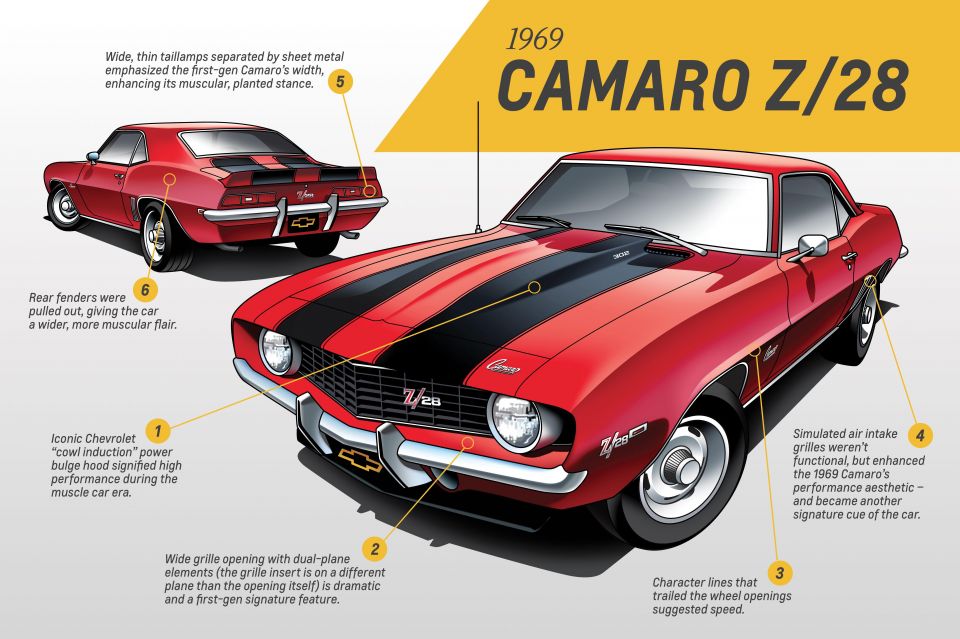
While the Chevrolet Corvair Monza was quite sporty, its rear-engine layout prevented it from borrowing the company’s V8 engines, and competing head-to-head with the later Ford Mustang and Plymouth Barracuda.
So, GM quickly whipped up a true pony car with many components taken from the “compact” Chevy II/Nova.
Like the humble family sedan, the Camaro had a unibody structure married with a front sub-frame, but it featured considerably more expressive styling.
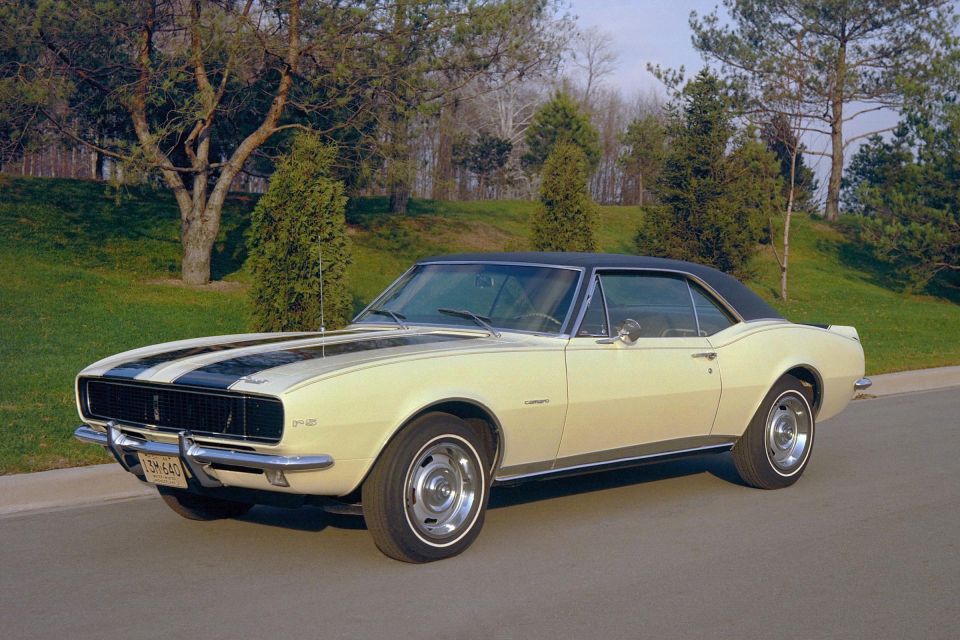
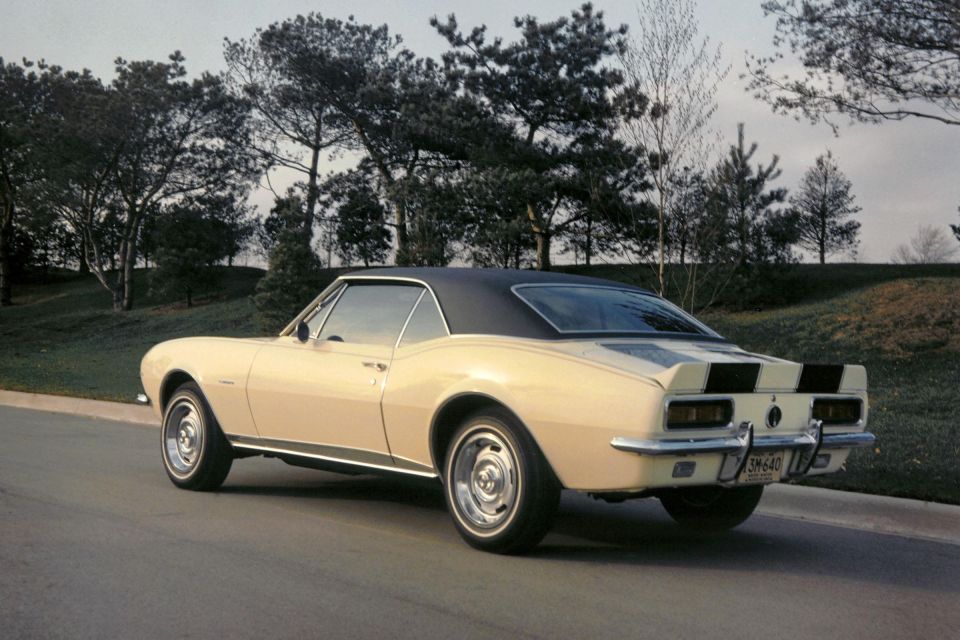
As was common at the time, each model year had styling changes, with the 1969 model gaining a completely new exterior, but retaining the same underpinnings.
In order to give the car blanket coverage of the segment, the Camaro was available with a dizzying array of engines, with up to 12 available in the final year. There were also a multitude of factory- and dealer-installed options, including stripes and hidden headlights.
At launch the Camaro range kicked off with a 3.8-litre straight-six making 104kW, but most people opted for one of the many small- and big-block V8s.

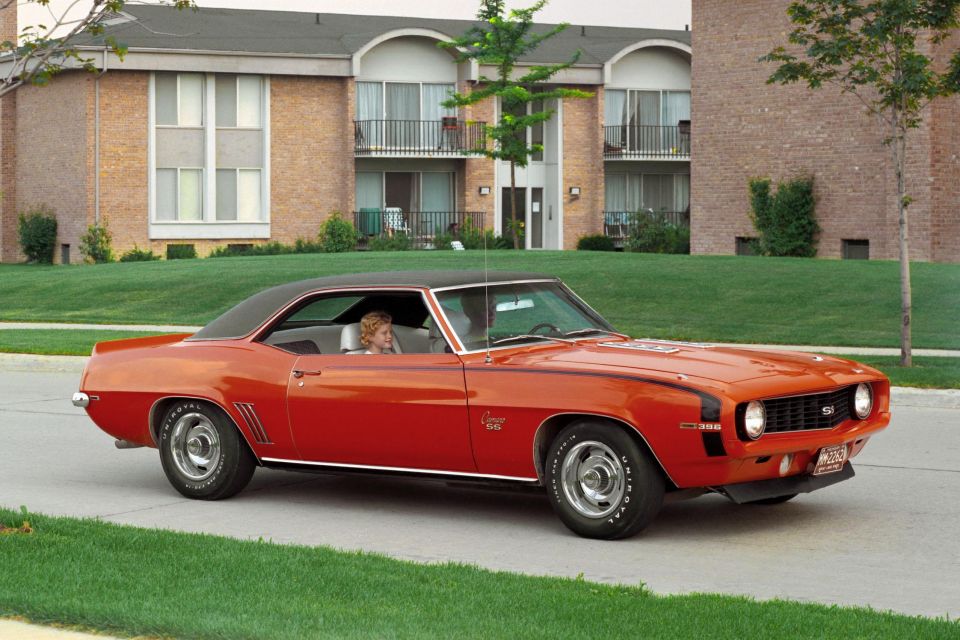
Among these was the 216kW 4.9-litre high-compression V8 found in the Z/28, an unadvertised option pack designed for racing. The Penske team’s Z/28 dominated the 1968 Trans-Am racing series, and the Camaro also proved to be a hit in the drag racing scene.
This generation, like all the subsequent ones until the model’s first retirement in 2002, shared its architecture and much of its styling with the Pontiac Firebird, although Pontiac did feature its own engines.
Length: 4775mm; Width: 1890mm; Height: 1273mm; Wheelbase: 2743mm
While the first-generation Camaro was a relatively short-lived affair, the second-generation model had a much longer lifespan. However, its introduction was delayed by almost a year thanks to manufacturing issues.

Unlike all other Camaros before and since, this generation was only available as a two-door coupe, with no convertible variant officially offered.
In terms of engines and performance, the second-generation Camaro picked up where the first iteration left off.
As the 70s wore on, though, performance and outputs declined. Initial power declines existed only on paper as GM, and other manufacturers, switched from quoting gross horsepower to net horsepower.
Because of the amendments to the Clean Air Act signed into law by President Richard Nixon in 1970, automakers had to cut output of various pollutants, including carbon monoxide and oxides of nitrogen, by 90 per cent by 1975.
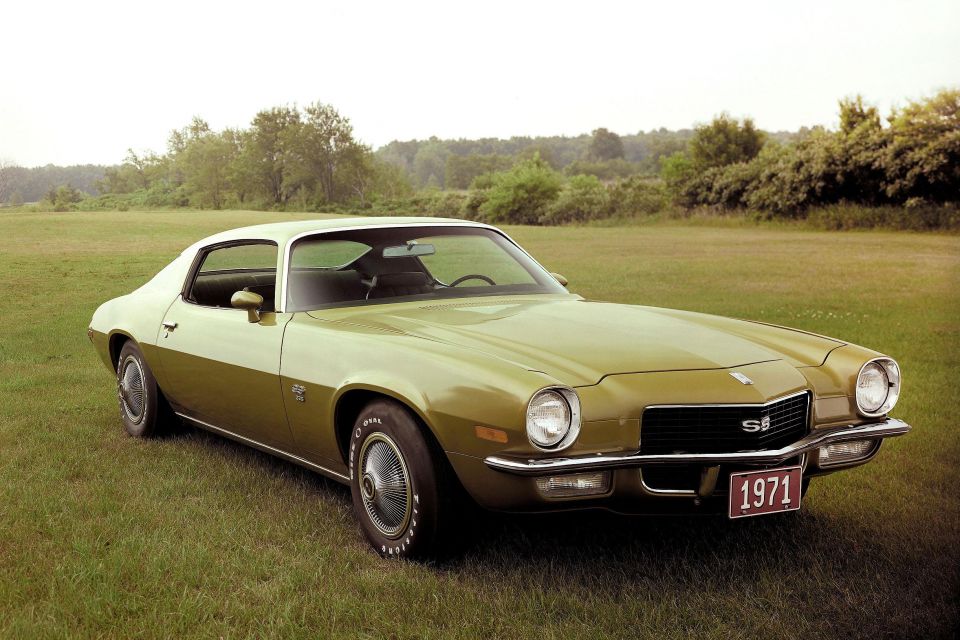
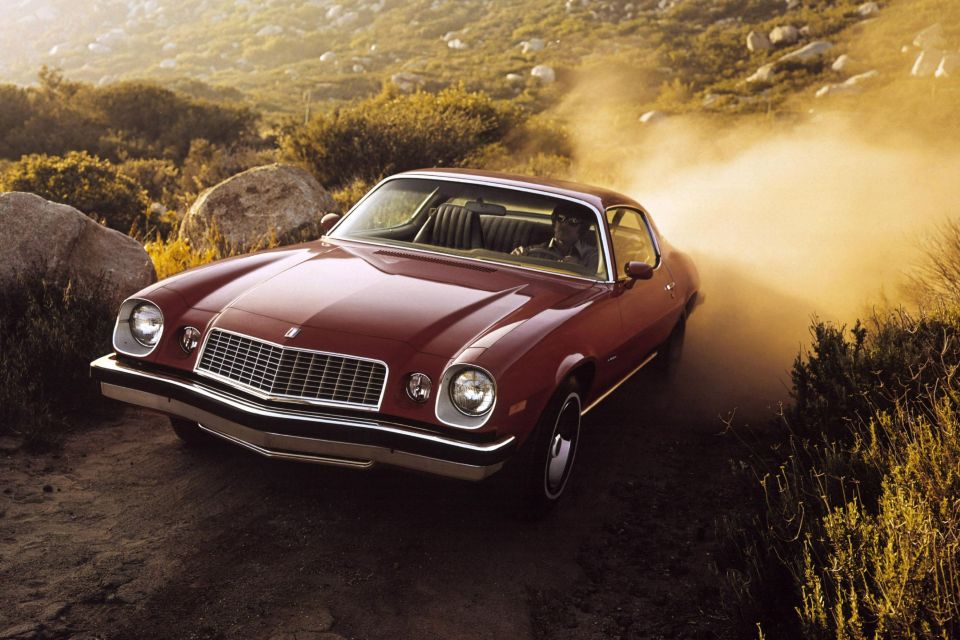
Without the technology to simultaneously maintain power and meet the new regulations, American automakers began winding back compression ratios, and fitting emission control equipment, which all reduced the toxicity of the gases their cars were pimping out, but to the detriment of performance.
During this “malaise era”, GM also began dropping some of the more potent engines and trim lines from the range, starting with the big-block V8s in 1973.
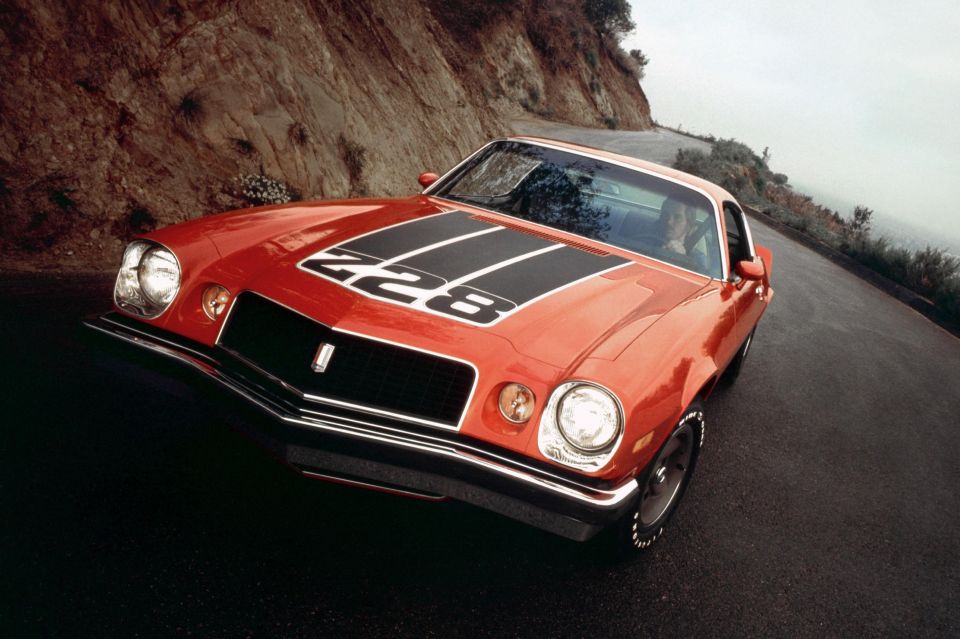
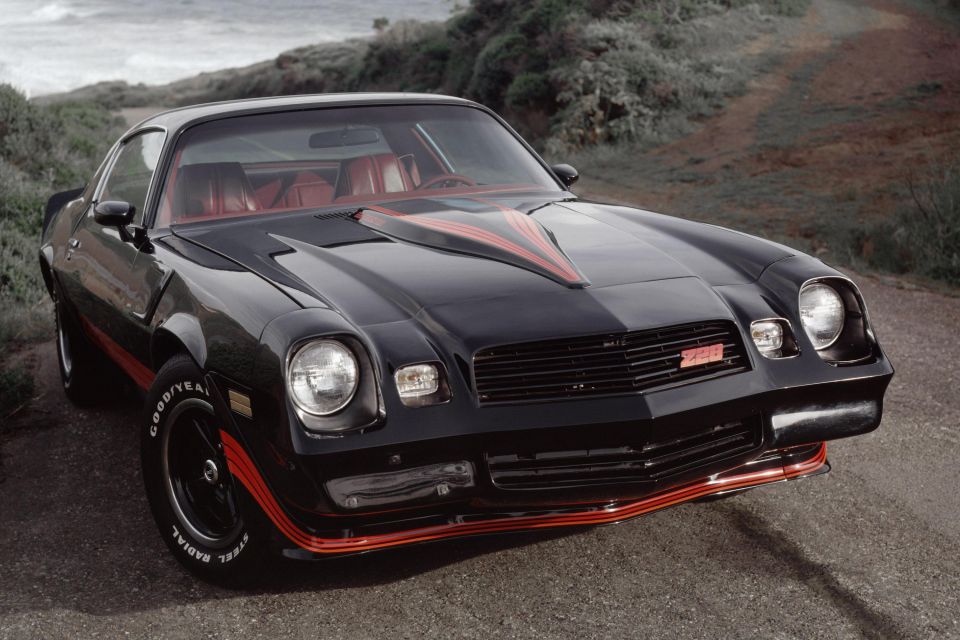
To illustrate the decline, let’s take a look at the Z/28. At the second-generation’s launch in 1970, the Z/28 switched to a larger 5.7-litre V8 making 268kW, but by 1974 it was cranking out a mere 183kW.
In 1975 the Z/28 was axed completely, and the Camaro’s base six-cylinder engine managed just 78kW, while the 5.7-litre V8 made 108kW in twin-barrel carburettor guise, or 116kW when fitted with a four-barrel unit.
When the Z28 returned in 1977, it lost a slash, and misplaced a farmyard full of horses, with the 5.7-litre now making just 138kW.
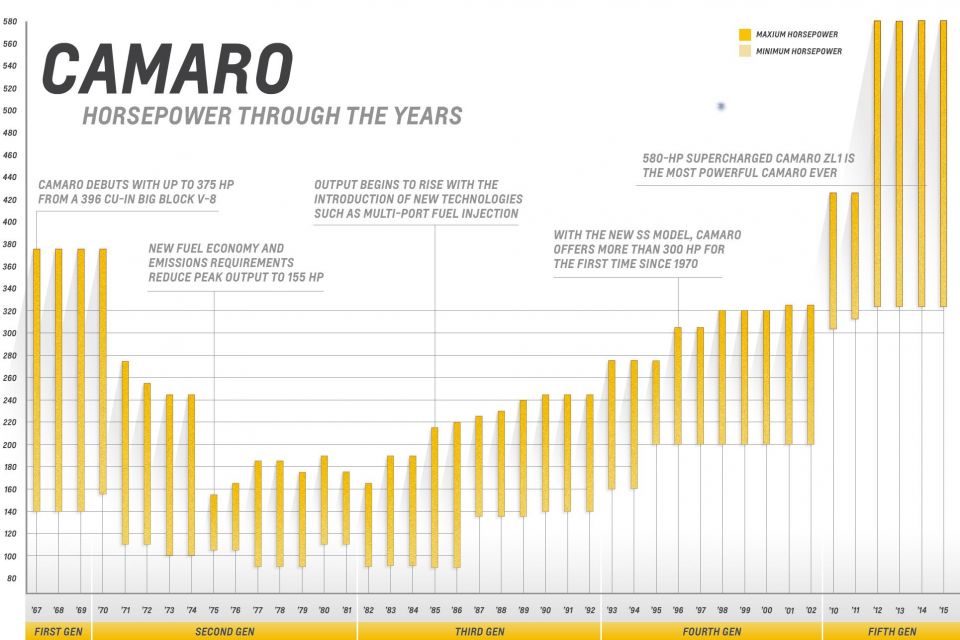
To meet new federal safety regulations, the Camaro gained weight through new equipment, which further blunted performance.
To make it compliant with new rules to reduce eliminate of repair costs for collisions under 5mph, the 1974 Camaro was also fitted with large bumpers, and a restyled front and rear. Considering some of the bumper abominations that were affixed to other cars to make them compliant, the Camaro’s new aluminium units actually looked pretty good.
On top of this, the OPEC-led oil crises which began in 1973 saw the cost of petrol increase dramatically. Key competitors like the AMC Javelin, Dodge Challenger and Plymouth Barracuda were all axed after 1974, but the Camaro was spared the guillotine.
Despite all these challenges, Camaro sales kept hitting new highs, with the model having its best-ever year in 1979 when a shade over 280,000 were sold.
While the second-generation Mustang, launched in 1973, embraced the era of downsizing by riding on the smaller and more efficient Pinto platform, the Camaro never followed suit.
Length: 4877mm; Width: 1850mm; Height: 1275mm; Wheelbase: 2565mm
While the third-generation Camaro stuck to the tried-and-true front-engine, rear-wheel drive layout, the new car looked quite unlike its rounded forebears with its very 80s sharp lines and crisp angles.
The Camaro also dropped the classic notchback coupe look for a more versatile three-door liftback design.
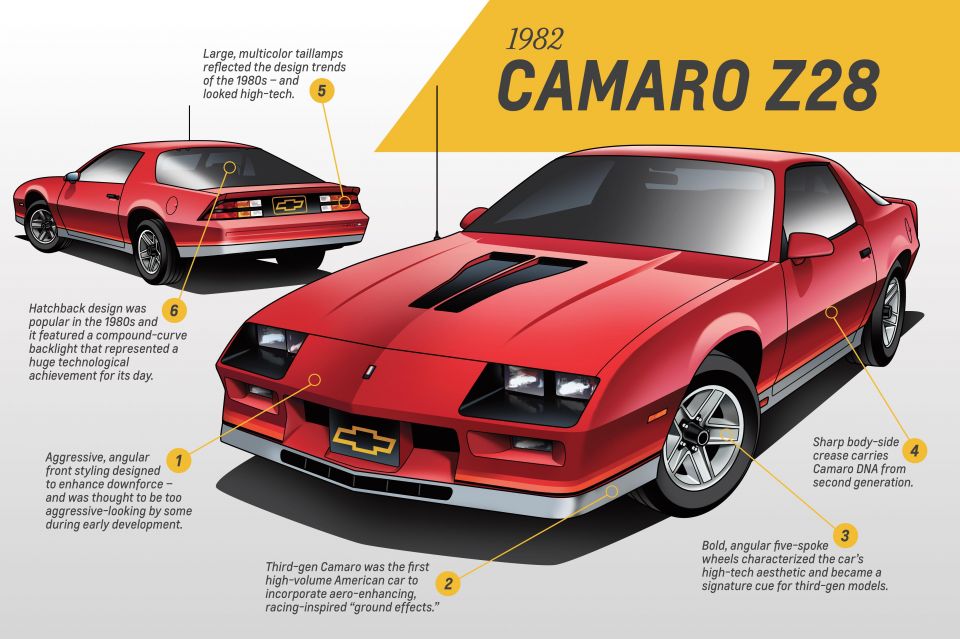
While the Camaro’s new edgy design looked business, its engines weren’t able to walk the walk.
For the first time in the Camaro’s history, it was offered with a four-cylinder, the 2.5-litre Iron Duke engine which wheezed out 67kW. Predictably, it wasn’t particularly well-loved, and was shuffled out the door in 1987.
Even the range-topping Z28’s 5.0-litre V8 had a rather anemic 108kW with carburettors and a four-speed manual, or 123kW with a three-speed auto and Cross-Fire injection.

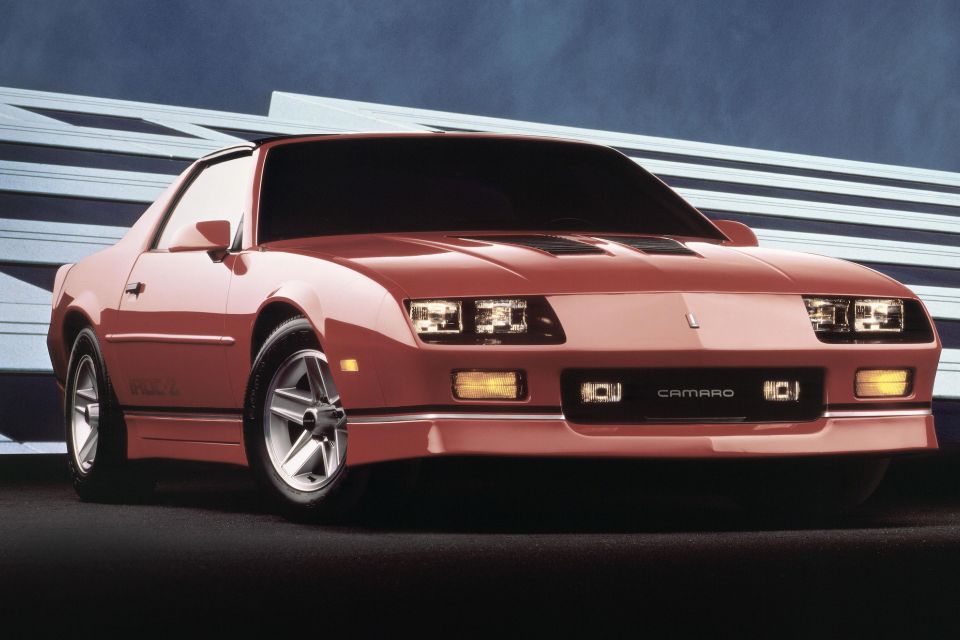
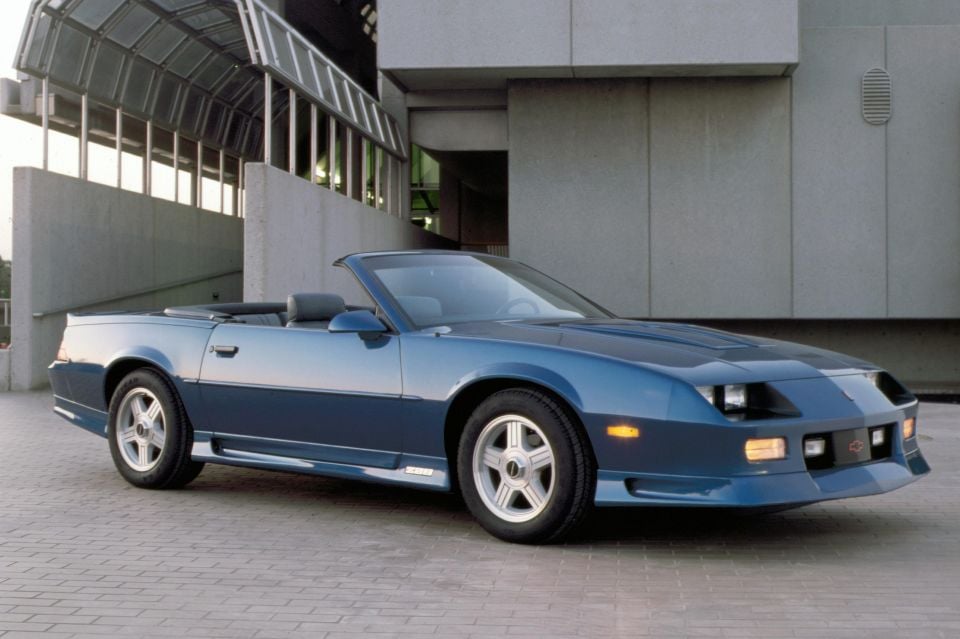
Things didn’t really improve until 1985 with the introduction of the IROC-Z, named after the International Race of Champions racing series, which added tuned port injection to bump output from the V8 to 160kW.
1985 also saw the Berlinetta model gain that most 80s of features, a digital dashboard.
From 1987, a convertible rejoined the Camaro family, although design and production was outsourced to American Specialty Cars (ASC), which also did conversions of the Toyota Celica, Mitsubishi 3000GT, and others.
Length: 4915mm; Width: 1882mm; Height: 1303mm; Wheelbase: 2568mm
Although GM considered switching the Camaro and Firebird to a front-wheel drive platform, it ended up using an updated version of the previous car’s chassis.
The fourth-generation Camaro boasted an all-new body that re-embraced the world of curves, and was available as a liftback (with available t-tops) and a convertible.
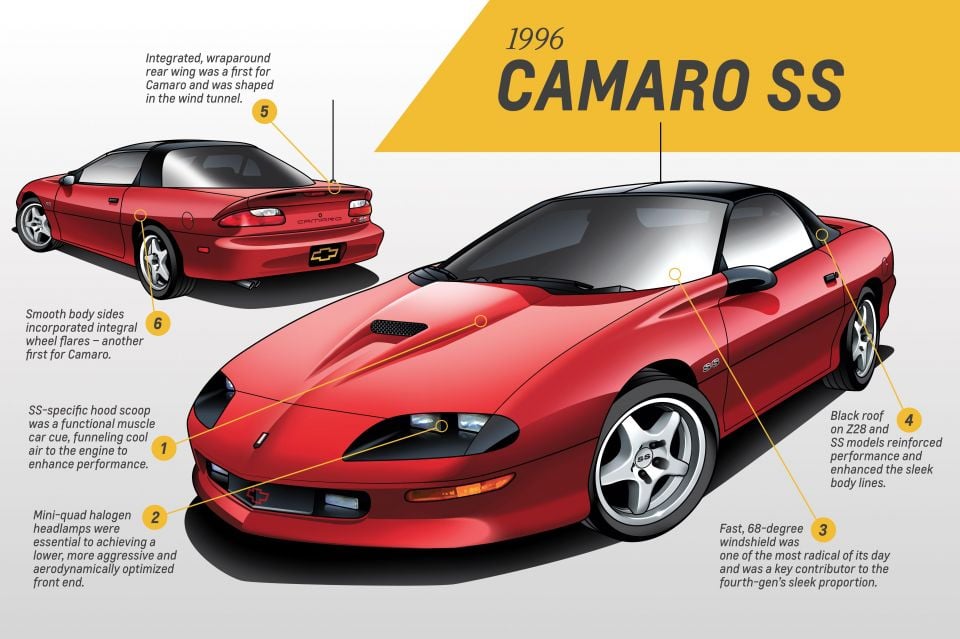
The fresh look also included doors, hatchback, and roof made from a new fibreglass/polyester resin material.
Other improvements include the adoption of rack-and-pinion steering, and the option of a six-speed manual on some models. Despite this, the Camaro retained a live rear axle.
Performance was also returning the Camaro range, with the 5.7-litre V8 making 205kW at launch, and rising steadily through the years, all the way up to 239kW in the 1999 SS.
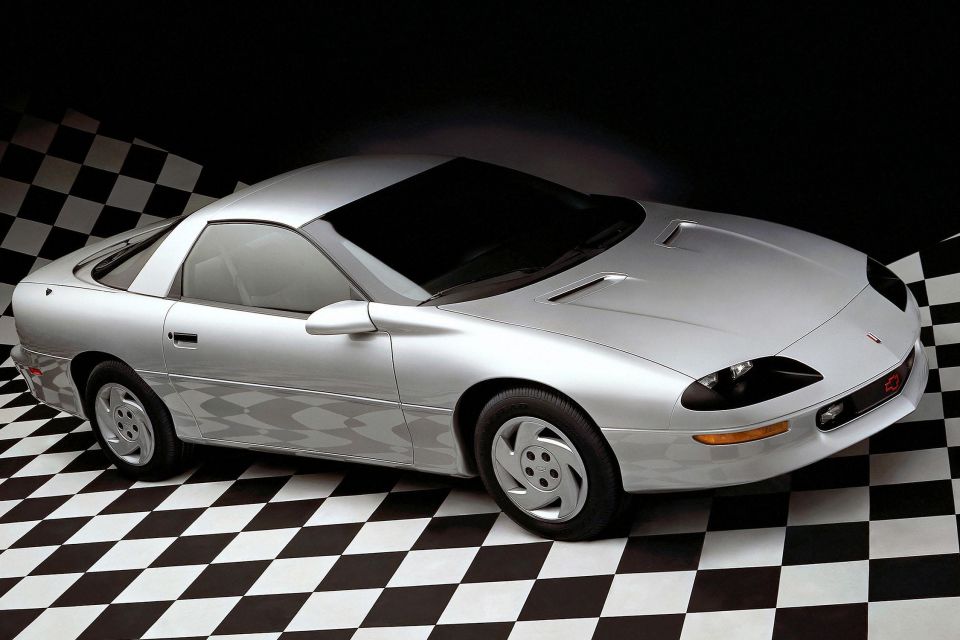
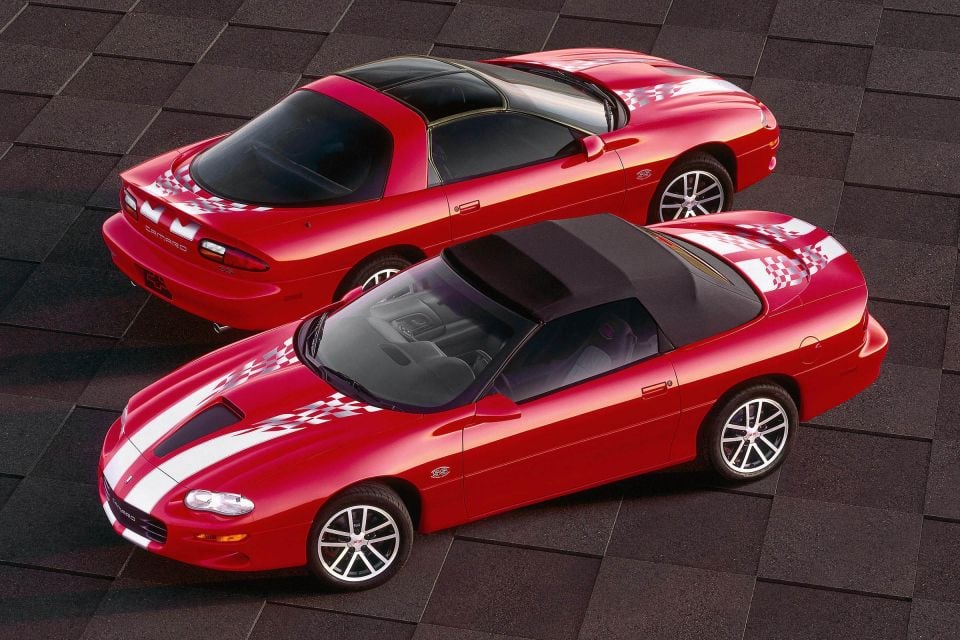
Length: 4840mm; Width: 1920mm; Height: 1380mm; Wheelbase: 2852mm
The rear-wheel drive Zeta platform developed by Holden in the early noughties for the VE Commodore was originally planned to live beneath a whole army of “full-size” vehicles for GM’s plethora of US brands.
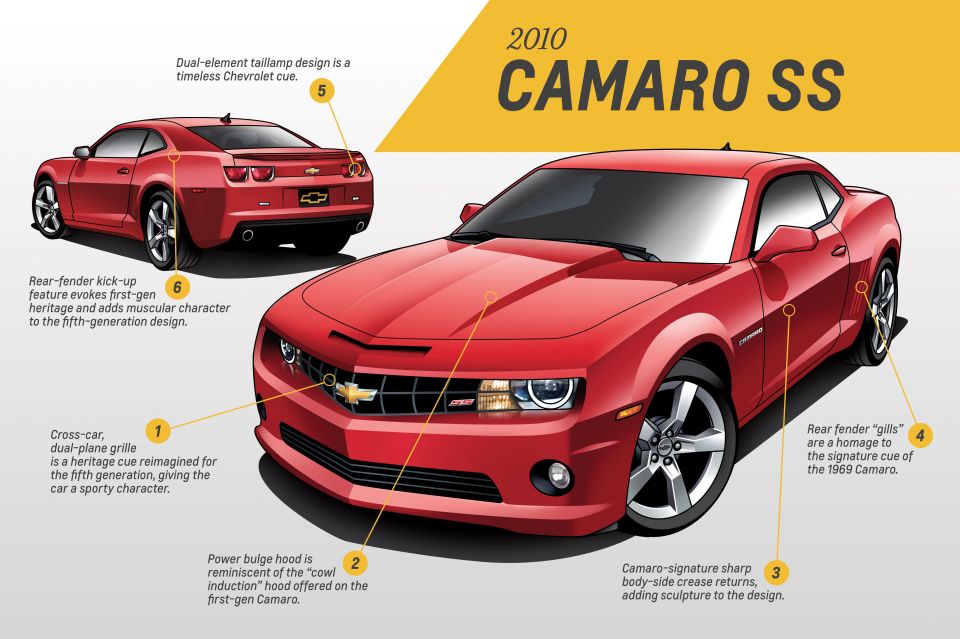
When the sub-prime mortgage crisis triggered a global financial meltdown, GM was pushed into Chapter 11 bankruptcy. Under the watchful eye of the US government, GM was rushed through proceedings, and produced a plan to return to profitability that included shutting down some brands, and prioritising fuel-sipping models.
Holden’s dreams of being masters of GM’s rear-wheel drive domain crumbled into the wind, but the Australian arm did get to design and engineer one model outside its core Commodore and Caprice line: the Chevy Camaro.
With its pointy nose, headlights that flow seamlessly into the grille, and quad tail-lights the Aussie-penned Camaro had plenty of nods to the past integrated into a modern take on the pony car coupe body.
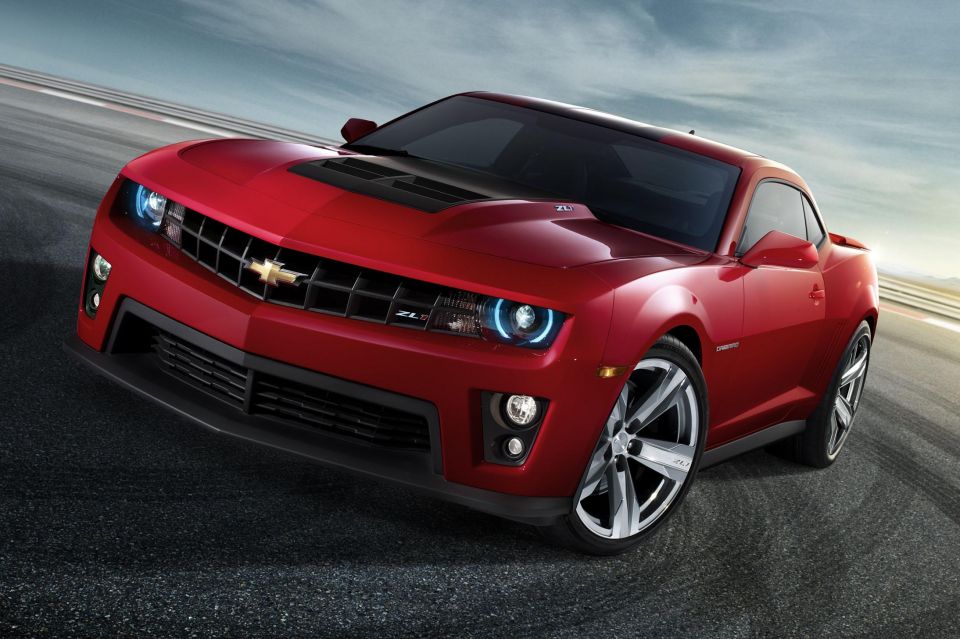
Despite being designed Down Under, the fifth-generation Camaro was built in Canada exclusively in left-hand drive, and was never sold in the land of its origin.
The Aussie Camaro also starred in the Michael Bay’s 2007 Transformers live-action movie as Bumblebee. While the Camaro Bumblebee was definitely faster than the Volkswagen Beetle-based model from the carton series, it arguably lacked its character.
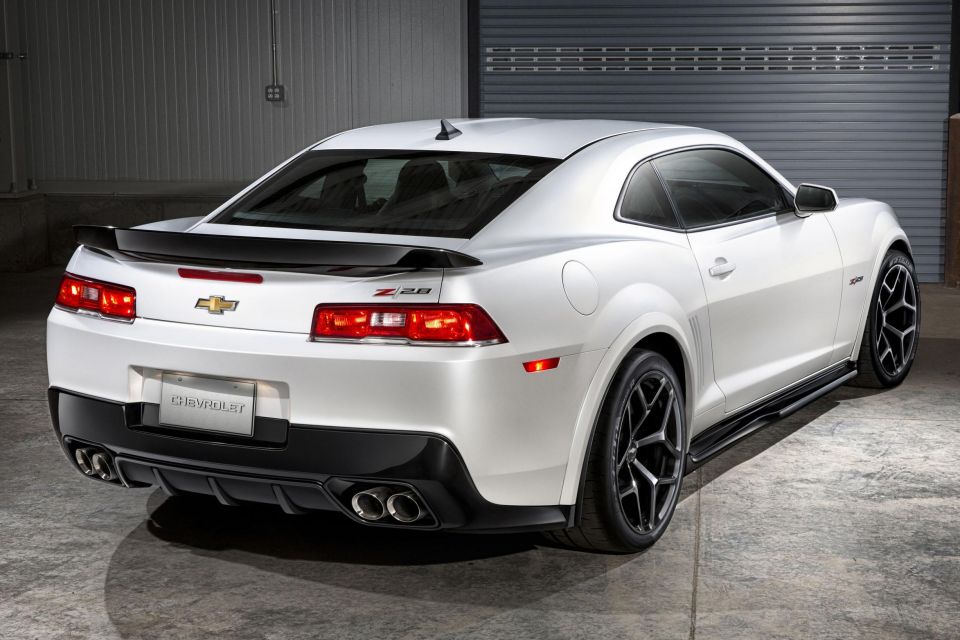
The days of miserly power outputs were over. The base 3.6-litre V6 made a healthy 227kW, while the 6.2-litre V8 had 318kW to its name.
This was followed by a 433kW supercharged 6.2-litre in the ZL1, and then the Z/28 with a 377kW naturally-aspirated 7.0-litre V8.
Length: 4783mm; Width: 1897mm; Height: 1321mm; Wheelbase: 2812mm
While stylistically the sixth-generation Camaro was an evolution of the previous car, under the skin it rode on a completely different platform.

By using a version of Alpha architecture that underpinned the Cadillac ATS and CTS, and later CT4 and CT5, the Camaro was able to shed around 90kg compared to its predecessor.
After a hiatus of around 28 years, the Camaro was once again available with a four-cylinder engine, although, like the Mustang, performance was boosted by a turbocharger, which helps the 2.0-litre mill make a respectable 205kW.
The current range also includes a 250kW 3.6-litre V6 and a 339kW 6.2-litre V8, as well as a ZL1 with a 485kW/881Nm 6.2-litre supercharged V8.
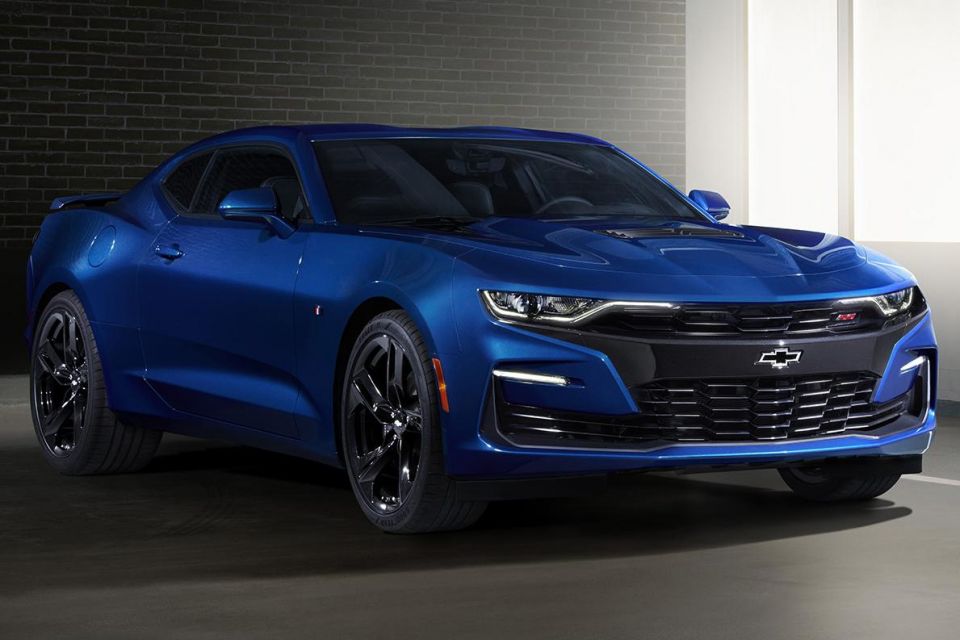
A rather unfortunate facelift unveiled in 2018 for the SS visually merged the upper grille with the lower air intake by blacking out the centre section of the bumper.
In response to vociferous online criticism, Chevrolet unveiled a “concept” at SEMA 2018, which entered production soon after, with a colour-coded the centre section and moved the bow tie emblem back to the upper grille.
While the Aussie-designed Camaro was never sold locally, Holden Special Vehicles converted a bunch of sixth-generation models between 2018 and 2020.
The Camaro was officially sold in Australia between 2018 and 2020, with conversion work done by Holden Special Vehicles. This greatly inflated costs, with the V8 automatic starting at $86,000 before on-road costs, or roughly $20,000 more than a similarly specced factory right-hand drive Ford Mustang. Sales were predictably poor.
In the States, sales haven’t cracked 30,000 units since the turn of the decade, with just 24,652 sold in 2022. That’s far behind both the Ford Mustang (44,332) and Dodge Challenger (55,245).
Where expert car reviews meet expert car buying – CarExpert gives you trusted advice, personalised service and real savings on your next new car.
Derek Fung would love to tell you about his multiple degrees, but he's too busy writing up some news right now. In his spare time Derek loves chasing automotive rabbits down the hole. Based in New York, New York, Derek loves to travel and is very much a window not an aisle person.


Matt Robinson
2 Hours Ago


Damion Smy
2 Hours Ago


Damion Smy
16 Hours Ago


Damion Smy
18 Hours Ago


Damion Smy
19 Hours Ago


Damion Smy
21 Hours Ago